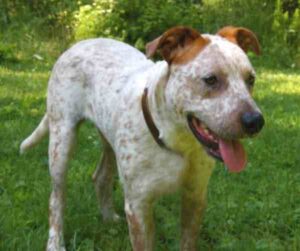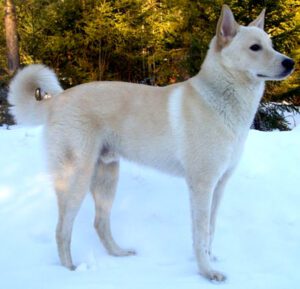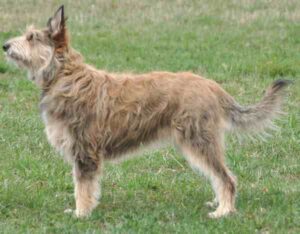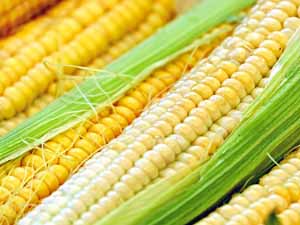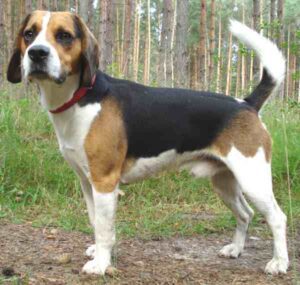The Boerboel dog is a large sized breed of mastiff-type dog, that is bred for the purpose of guarding the homestead and working the farm. They are one of the most powerful dog breeds in the world and are also known by some other names such as the South African Mastiff, South African Boerboel, Borbull, Boer dog and Bole.
The Boerboel dog breed was developed from South Africa. It was bred to help the farmers in South Africa to defend their homesteads from hyenas, lions and all manner of deadly wildlife, while also providing invaluable companionship.
The Boerboel, pronounced somewhat like ‘boo-er-bool’, gets it’s name from Dutch/Afrikaans words that roughly translate to ‘farmer’s dog’. It is the only South African breed that was created to defend the homestead.
Boerboel dog breeding is both a hobby and an industry in South Africa. These dogs are now exported from South Africa to other parts of the world. Due to its use as a farm dog which brought it into conflict with large African predators such as lions, the Boerboel has been artificially selected for ability to protect themselves and others. Individual Boerboels have been documented killing Adult male leopards.
Despite the Boerboel’s long breeding history, there is great uncertainty as to how many and which breeds were used to create it. It is generally believed that the breed was created from interbreeding native African landrace dogs, such as the Africanis, with breeds brought into South Africa by Dutch, French, and British settlers.
The most likely origins date back to Jan van Riebeeck’s arrival to the Cape in 1652, who brought with him a “Bullenbijter”, which is Dutch slang for Bulldog.[6] Other original and later European settlers brought large, strong dogs that almost certainly bred with the indigenous domestic dog breeds of South Africa.
In the early 1860s, when military posts were scattered across the South African frontier, bloodhounds, staghounds, greyhounds, bulldogs, terriers, mastiffs, pointers, and occasionally foxhounds were to be found at each post.
The Boer dog was a cross between these breeds. It was generally in the vicinity of military posts where the best Boer dogs were to be found. In addition, the best dogs for hunting leopards and baboons were a cross between a mastiff and a bulldog.[1]
Boerboel Dog Characteristics
The Boerboel dogs are large in size and are very beautiful, with strong bone structure and well developed muscles. Their head appears blocky, but not overdone, with a short length between the stop and nose.
The breed should look impressive, carrying itself with confidence and powerful movement, which should be buoyand, and unencumbered, despite it’s size.
The breed should be symmetrical and balanced, following the desired proportions for the breed. Coat of the Boerboel dog is short and sleek with dense hair coverage.
The breed has an outer coat that is normally coarse and straight, and an undercoat that is soft and dense. The recognized colors are brindle, fawn, brown and black. Many dogs have a black mask around their mouth that sometimes extends to their eyes and ears.
The Boerboel dogs are large in size. The males should be markedly bigger in size than the females. Average body height of the mature dog is between 24 and 30 inches at the withers. Average live body weight of the mature dog is between 65 and 90 kg for males and between 55 and 70 kg for the females.
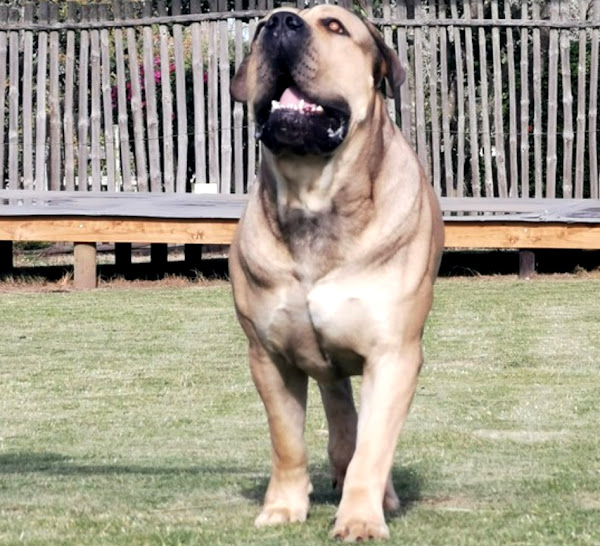
Temperament
The Boerboel dogs are an intelligent and energetic breed. They are loyal, great with children and tend to be protective of their family and territory. They are quite charming when not being lazy, and will not hesitate to defend their loved ones to the death.
They are often called ‘Velcro’ dogs, always wanting to be with their owners, and so, are not prone to wandering off on their own. They require training and firm handling from an early age. It is usual for this breed to display aggression toward other dogs or strangers.
The protective character of the Boerboel dogs is still evident and is much sought after, as is the calm, stable, and confident composure of the breed. They are obedient and intelligent and have strong territorial instincts. They remain the guarding breed of choice amongst current day farmers and are very popular for the same reason in urban communities.
Lifespan
Average lifespan of the Boerboel dog breed is between 9 and 11 years.
Feeding
How much a mature dog eats depends on it’s size, age, build, metabolism and activity level. Dogs are individuals, just like people, and they don’t all need the same amount of food.
The Boerboel dogs are very active and large in size. So, their diet should be formulated for a large-sized breed with high exercise needs. You can also consult with a vet in your area for better recommendations.
Caring
Taking good care of the animals is very important for raising Boerboel dogs. Their main need when it comes to care is to be mentally and physically stimulated through exercise and play. Beyond that, regular care is fairly simple.
Trim their nails about once every two weeks. And brush their teeth regularly as recommended by a vet. Check their ears weekly for debris and wax buildup, and clean as needed. Do this for avoiding infection or infestation by pests.
Health
The Boerboel dogs are generally healthy. But like all other dog breeds, they are also prone to certain health conditions.
Their common health problems include hip or elbow dysplasia, ectropion, entropion, heart disease and bloat. Always keep good contact with a vet in your area.
| Breed Name | Boerboel |
| Other Names | Also known by some other names such as the South African Mastiff, South African Boerboel, Borbull, Boer dog and Bole. |
| Breed Size | Large |
| Height | Between 24 and 30 inches at the withers |
| Weight | Between 65 and 90 kg for males and between 55 and 70 kg for the females |
| Good as pets | Yes |
| Climate Tolerance | All climates |
| Color | With and without a black mask: fawn, red, brown, brindle, cream brindle and black |
| Lifespan | Between 9 and 11 years |
| Good for children | Yes |
| Rarity | Common |
| Country of Origin | South Africa |

